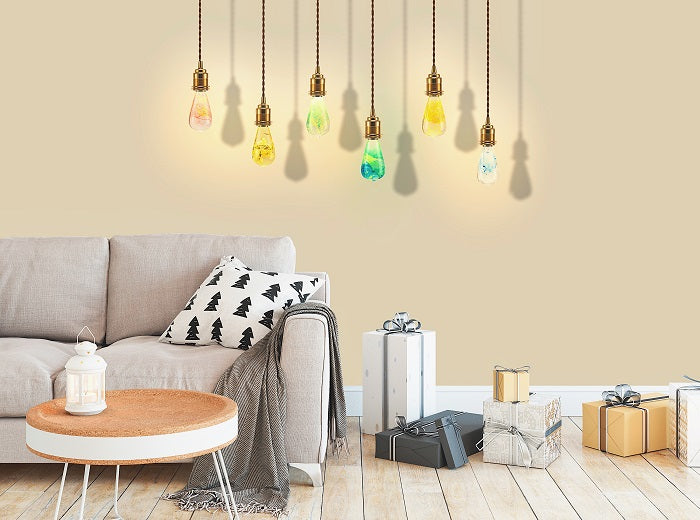Guide to Know Different Light Bulb Types and Their Best Uses
People went off in search of a replacement light bulb, was usually puzzled by the proliferation of new types of bulbs in the lighting aisle. In this article, we are going to show you the different varieties of light bulbs on the market and their best uses.
Generally, there are 6 types of bulbs on the market nowadays:
- Incandescent
- LED (Light Emitting Diode)
- HID (High Intensity Discharge)
- Compact Fluorescent
- Linear Fluorescent
- Halogen
- *Speciality
1. Incandescent

The incandescent light bulb or lamp is a source of electric light that works by incandescence, which is the emission of light caused by heating the filament. They are made in an extremely wide range of sizes, wattages, and voltages.
In 2007 Congress passed the Energy Independence and Security Act requiring new energy-efficient standards for basic light bulbs. All standard 100-, 75-, 60- and 40-watt incandescent bulbs are being phased out and will no longer be produced.
- Incandescent bulbs last on average for 1 year.
- Incandescent bulbs do not contain mercury.
- They can be used with a dimmer switch.
2. Light Emitting Diode (LED)

Light emitting diode (LED) bulbs are currently the most energy efficient of all types of light bulbs. The materials used to generate the light are encased within a solid material (“solid-state” technology). Practically, this translates into a lamp with a rated life much longer than those using non-solid-state technology.
- Available for outdoor use; just make sure the packaging indicates the bulb is rated for outdoor use.
- Does not contribute to heat buildup, which helps save on air conditioning.
- Suited for signs and indicators, night lights, flashlights, undercabinet fixtures, and some recessed light/downlight applications where the constancy of color temperature is not critical.
3.High Intensity Discharge (HID)
High Intensity Discharge (HID) bulbs are primarily used in larger spaces such as warehouses, commercial buildings or in streetlights. They are filled with sodium or mercury vapor that conducts electricity. HID bulbs don't have filaments like most light bulbs, so they last longer.

HID lamps are used primarily in applications where the most critical factor is creating as much visible light per watt as possible. Major applications include streetlights, gymnasiums, warehouses, large retail facilities, and stadiums, and plant growing rooms.
4.Compact Fluorescent

Compact fluorescent (CFL) bulbs—easily identified by their hallmark curlicue design—use a fraction of the wattage incandescent bulbs use. Both come in a wide variety of wattages, sizes, color temperatures, and base types, and they are known primarily for their efficiency, long life, low cost, and ease of upgrading.
- Good for reading and project work.
- Don’t work with dimmer switches and aren’t particularly well suited for light fixtures you switch on.
5.Linear Fluorescent

The linear fluorescent light bulb or lamp is a type of gas-discharge lamp. Linear fluorescent bulbs come in a wide variety of lengths, diameters, wattages, and color temperatures.
- Known for high energy efficiency, long life, and relatively low cost.
- Fluorescent tubes will not work without a ballast.
6.Halogen

The halogen light bulb or lamp is a type of incandescent lamp which uses a halogen gas in order to increase both light output and rated life, but they use less energy.
- Last two to three times longer than standard incandescent bulbs.
- Smaller in size than standard light bulbs.
- Capable of producing brighter light than standard incandescent designs.
After about 750 to 1000 hours of use, the filament eventually gets so thin that it breaks, which is what happens when your light bulb “burns out.” But, with the invention of the halogen bulb, there is a new solution to illuminate your space without some of the complications of incandescent bulbs.
*7. Speciality - EPlight

E.P. Light is a sort of LED light made with environmentally-friendly silicone injections. Each bulb is made from the highest quality resin, found only in Burma. It is very transparent, it won't break when it's dropped, and it is not hot to the touch even after it has been illuminated for hours.
The actual color and paint curves inside is totally random and unique, which makes each piece an artwork.
Check out our EPLight LED bulbs for more information about whether this ambient lighting is suitable for your needs.
--------------------------------


POST COMMENTS
Hi
I need your help